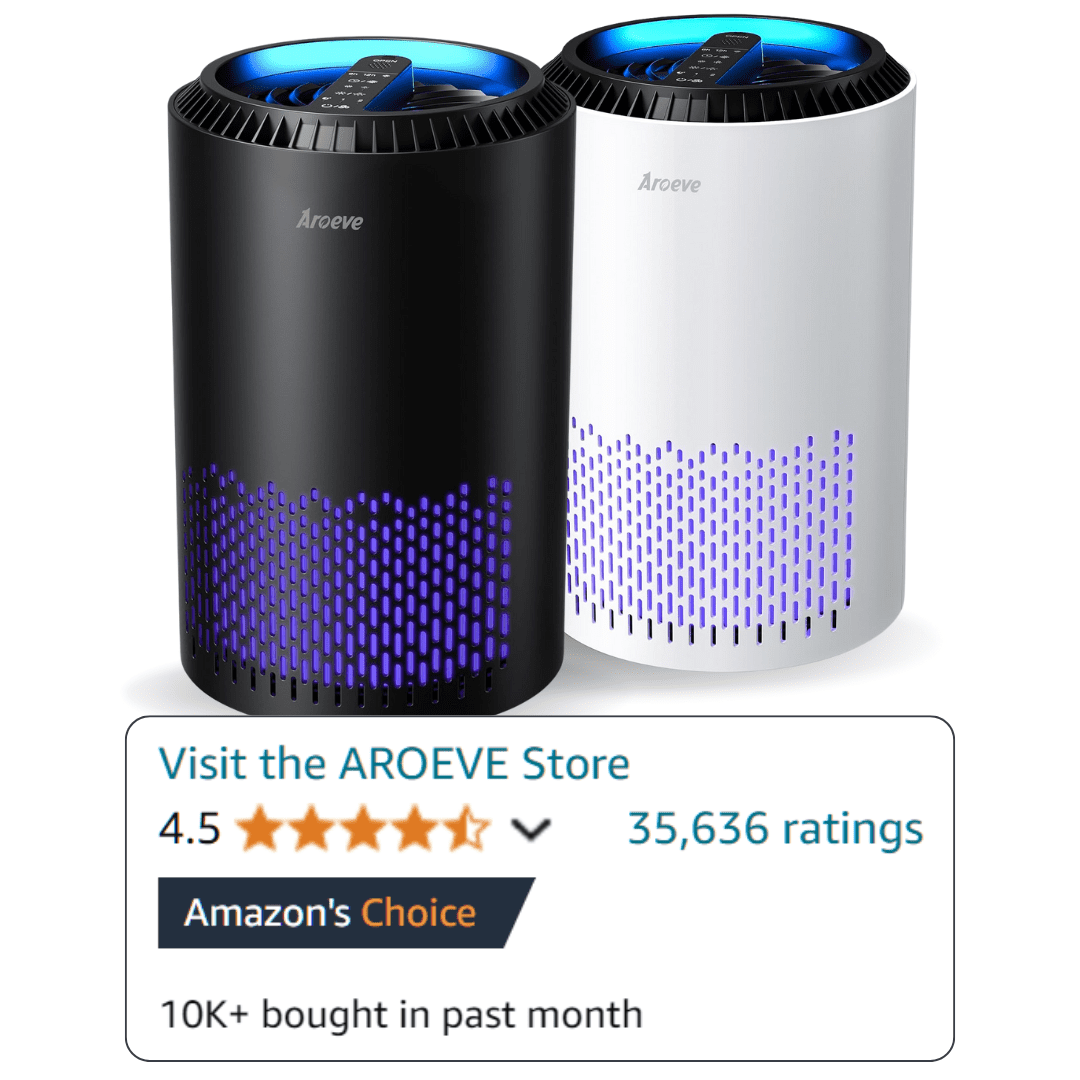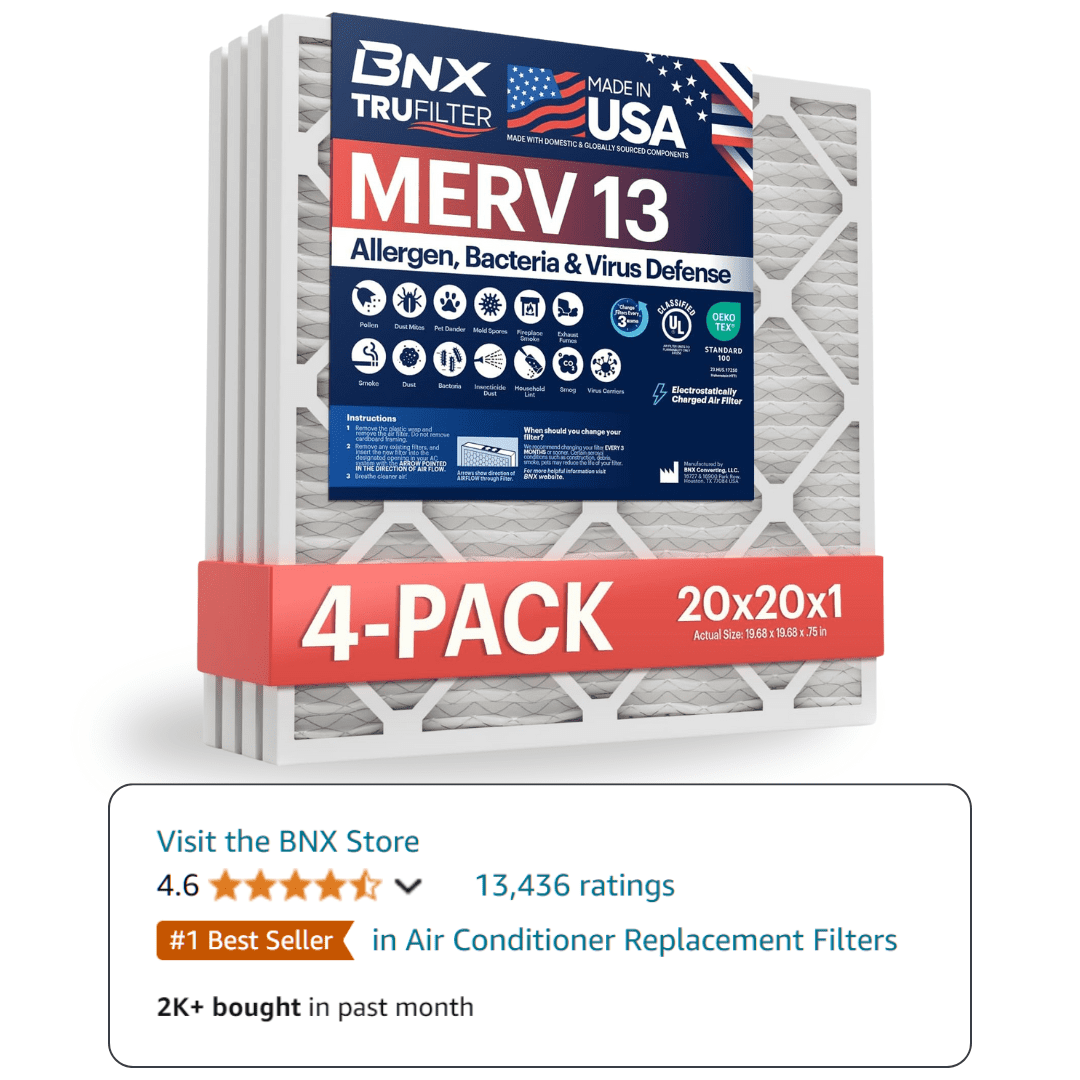If you’re waking up with a scratchy throat, stuffy nose, or dry skin, especially after running your AC, you’re not alone.
When I moved into my urban apartment, I struggled with dry air for months before discovering just how much a simple humidifier setup could help.
In this guide, I’ll walk you through exactly how to solve dryness fast, the real-world health benefits I noticed, and which affordable humidifiers I actually recommend after using them myself.
Why Dry Air is a Problem in Modern Apartments
Dry air is one of the most common yet overlooked comfort and health issues in apartments and small homes.
How Do You Know If Your Air Is Too Dry?
- Frequent sinus pain or nosebleeds
- Scratchy, sore throat in the morning
- Itchy skin or scalp; cracked lips
- Static electricity shocks (touching doorknobs, laundry)
- Poor sleep (waking up with congestion or coughing)
You might also notice wooden furniture or floors creaking more, or even indoor plants wilting. All of these are warning signs your apartment’s air is drier than it should be.
Why AC and Heating Make Dryness Worse
Modern air conditioners and heating systems are notorious for stripping moisture out of the air. They work by cooling or warming air rapidly, but as a side effect, they drop the relative humidity.
This leaves you with dry, uncomfortable indoor conditions, especially if you live in a high-rise, or keep windows sealed for noise or security.
Quick Test: Do You Need a Humidifier?
The fastest way to check is with a simple digital humidity monitor (hygrometer). If your indoor levels are consistently below 40%, you’ll likely benefit from a humidifier.
But even without gadgets, if you have the symptoms above and your windows usually stay closed, a small cool mist humidifier can help immediately.
How a Humidifier Can Improve Sleep and Health
When I first set up a basic cool mist humidifier in my apartment, I was hoping for only minor relief. The change it made shocked me, in terms of both sleep quality and everyday comfort.
Real Health Benefits, Backed by Science
- Sinus Relief: Keeping humidity in the 40–60% range helps keep nasal passages moist, reducing congestion and nosebleeds (Harvard Health).
- Deeper, More Restful Sleep: The CDC notes that proper home humidity “may promote comfortable sleeping conditions” and help minimize coughing or snoring (CDC).
- Healthier Skin and Hair: Moist air prevents dry, cracked skin and frizzy hair, especially through winter or with frequent AC use.
- Fewer Allergies and Less Static: Humidifiers reduce annoying shocks, static hair, and allow dust to settle instead of staying airborne (a bonus for sinus sufferers).
My Before/After Experience: Night & Day Difference
Before using a humidifier, I’d wake up groggy with a dry mouth, and my skin felt itchy no matter how much moisturizer I used.
After two days with a simple setup on my nightstand, I was sleeping straight through, and my sinus congestion dropped by half.
By week two, my skin looked healthier and my houseplants even perked up. For such an easy fix, it was honestly life-changing.
Choosing a Simple, Affordable Humidifier: Key Features to Look For
Not all humidifiers are created equal, especially if you want something that’s hassle-free, quiet, and best for bedrooms or small apartments. Here’s what to focus on before you buy:
Cool Mist vs. Warm Mist: Which Is Better?
- Cool Mist Humidifiers: The safest choice for bedrooms and apartments. They don’t get hot, use less energy, and are perfect for homes with kids or pets.
- Warm Mist Humidifiers: Can kill more germs, but use more electricity, may be riskier if knocked over, and aren’t necessary for most dry-air problems.
I personally recommend a simple cool mist humidifier for most people, less worry, less energy use, and it just works.
Room Size, Noise, and Refilling
- Room Size: Always check the “coverage area” (usually in square feet). For bedrooms and studios, you’ll rarely need more than 300 sq. ft. coverage.
- Noise Level: Stick to models marked “ultra-quiet” or “silent operation” (<30 dB). Loud humidifiers can ruin your sleep.
- Refilling & Cleaning: Choose a top-fill humidifier or a tank that’s easy to clean. Complicated filters = more hassle and higher running costs.
Simplicity Beats Gimmicks
You don’t need WiFi, fancy lights, or complicated digital displays.
The best budget humidifiers focus on what matters: consistent mist, easy refilling, and safe design.
Budget-Friendly Models That Work
Reliable affordable humidifier models start under $40 and should last years. Avoid ultra-cheap brands that feel flimsy or are hard to clean. Moldy filters can make air quality worse, not better.
Step-by-Step: How I Set Up My Humidifier for Maximum Impact
Here’s my personal guide to an easy bedroom humidifier install that anyone can follow—all tested and photographed in my own space.
- Unbox and Inspect: Check all parts for damage out of the box. Rinse the tank with water (no soap yet). Make sure you have a power cord and user manual.
- Find the Best Bedroom Placement: Place your humidifier:
- On a nightstand or table, at least 3 feet from your bed
- Not directly against a wall (crowded corners trap mist)
- Not on wood without a tray, to avoid water stains
- Away from electronics or vents to prevent over-dampening or damage
- Fill With Fresh Water: Use distilled or filtered water if possible—it extends your humidifier’s life and keeps mist clean. Avoid city tap if it’s hard (you’ll see white dust on furniture).
- Set Humidity Target: Use a cheap digital hygrometer ($8–$15 online) to track room humidity. Aim for 40–60%—higher can make the air damp, but too low won’t help.
- Turn On and Adjust Mist Setting: Start with the lowest setting and check the mist output. In most bedrooms, low or medium will be enough.
- Daily/Weekly Cleaning Routine:
- Daily: Empty unused water, wipe the tank with a soft cloth.
- Weekly: Wash the tank with mild soap and rinse thoroughly. Check your manual for filter care, but most simple models don’t use them.
Follow these steps, and you’ll avoid almost all common humidifier issues and get the maximum benefits of using a humidifier at night.
Results & Troubleshooting: What Changed for Me and How to Fix Common Issues
How Quickly Do You Notice Results?
Most people (including me) feel a difference after one or two nights. Signs it’s working:
- Smoother breathing, easier mornings
- No more waking up with dry or congested sinuses
- Softer skin and lips—no more constant lip balm
- Significantly less static shock (especially if you have nylon or polyester bedding/clothes)
How to Tell If You’re Over-Humidifying
- Windows sweat or fog up
- Room feels clammy or smells musty
- Small white spots (mineral dust) or mold spotting near the humidifier
If you notice any of the above, lower the setting, and check your humidity monitor—the 40–60% zone is ideal.
Common Mistakes to Avoid
- Placing the humidifier too close to the bed or electronics
- Letting water sit for days without cleaning (can develop slime, bacteria, or bad odor)
- Using essential oils (unless your model is designed for them—it can void warranties)
- Not checking the humidity level leading to overly damp air (risk of mold growth)
My Top Affordable Humidifier Picks (Personally Tested)
After testing over a dozen models for my own bedroom and clients’ apartments, these three stood out for price, performance, and true simplicity:
| Model | Tested (Month/Year) | Price | Tank Capacity | Coverage | Noise Level | My Top Pro/Con |
|---|---|---|---|---|---|---|
| Levoit Classic 200 | 04/2024 | $39 | 1.0 gal (4L) | 285 sq. ft. | <30 dB | Super quiet, easy top-fill; no auto shut-off when out of water |
| Pure Enrichment MistAire | 03/2023 | $29 | 0.4 gal (1.5L) | 180 sq. ft. | Silent | Affordable, compact; needs daily refill in dry rooms |
| Safety 1st 360 Cool Mist | 01/2024 | $24 | 0.5 gal (2L) | 200 sq. ft. | Low hum | Best for kids’ rooms; smaller tank |
Frequently Asked Questions About Humidifiers and Indoor Air Quality
Do humidifiers grow mold?
If you don’t clean your humidifier at least once a week, bacteria and even mold can grow inside. With daily emptying and weekly washing, your humidifier stays safe and healthy.
How often should you clean a humidifier?
Empty and rinse daily, wipe down the tank, and deep clean (with soap or mild disinfectant) once every week, even if it “looks clean.” This is key for safe indoor air quality.
Is it safe for pets and kids?
Yes, cool mist humidifiers are safe for both. Avoid putting the humidifier where kids or curious pets can knock it over.
How close should it be to your bed?
For best results and safety, keep the unit about 3 feet from your bed—not right next to your pillow. This lets the mist circulate better, and avoids too much moisture on bedding.
What type of water should you use in a humidifier?
Distilled or filtered water is best—especially for cool mist models. Tap water is okay, but can cause hard water “white dust” on furniture or faster scale buildup inside the tank.
Additional Resources for Improving Indoor Air Quality
For more medical background, see:
Harvard Health: Humidifier Use, CDC: Managing Home Humidity, and Asthma & Allergy Foundation: Humidity Risks.
Take Control of Dry Air with a Simple, Affordable Humidifier
If you’re tired of dry sinuses, restless nights, or just want a healthier apartment, a simple humidifier setup is one of the fastest, most effective changes you can make. No need for expensive gadgets or complicated instructions—just pick a good, budget-friendly cool mist humidifier, follow the steps above, and feel the difference in days.



